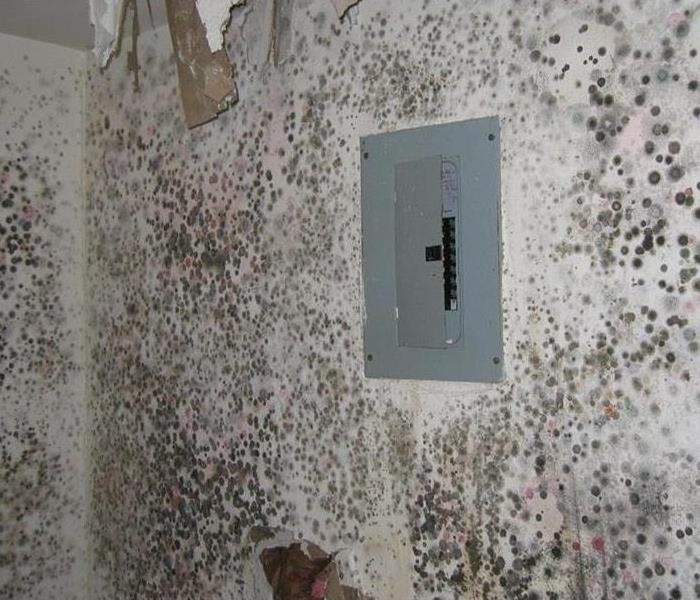Types of Mold
1/4/2021 (Permalink)
 No matter what type of mold is in your home, be sure to remove with the help of a professional, like SERVPRO of Freeport, Roosevelt!
No matter what type of mold is in your home, be sure to remove with the help of a professional, like SERVPRO of Freeport, Roosevelt!
Household mold is an all too common occurrence that can cause major issues for anyone living with it. While many different types of mold can grow in many different places, here are a few common ones to watch out for in your home or business. Every mold damage scenario is different and requires a unique solution, but the general mold remediation process stays the same. The steps listed below illustrate the "typical" process:
1) Contact SERVPRO of Freeport, Roosevelt2) Inspection and mold damage assessment3) Mold Containment4) Air Filtration5) Removing Mold and Mold-Infested Materials6) Cleaning Contents and Belongings7) Restoration These are some of the most common types of mold in homes and or businesses and how to identify them. 1) Penicillium/Aspergillus - While many molds require active water intrusion, penicillium/ aspergillus can thrive either in dry conditions or with moderate humidity. Human impact from this mold may include allergy-type symptoms such as hay fever and asthma along with various respiratory irritations and infections. It is most commonly found in household dust, wallpaper, fabrics (including carpet) and moist building materials. Colonies may range in color from grey to white, plus various shades of blue or green. 2) Cladosporium - generally considered one of the most common molds worldwide, produces the same symptoms as the penicillium/aspergillus cited above, in addition to symptoms such as dry skin, hives and postnasal drip. It will grow on many substrates, including textiles, wood and moist window sills (check windows for interior condensation), and has a wide temperature-range tolerance. Colonies may range in color from white, to olive green, to brown, to black. 3) Chaetomium is a marker mold, meaning that it is an indicator or water intrusion. It will produce allergy type symptoms such as asthma and hay fever, plus a nail infection known as onychomycosis. It may also produce symptoms such as memory loss, balance issues, acid reflux headaches, nose bleeds, and fevers. Indoors, it will grow on virtually any substrate that may be moist, and is commonly found on damp sheetrock. It may appear as a smudge of dirt, and can range in color from brown to black. 3) Stachybotrys, commonly known as toxic, black mold this mold has achieved infamy in the media, and with good reason. It requires live, active water intrusion to commence growth. Indoors, it is commonly found on wet materials containing cellulose, such as sheetrock, jute, wicker, straw baskets, and other paper materials. To humans it can cause depression, seizures, nasal passages and eyes to burn. It is known to produce severe brain fog, and mental impairment. It is black in appearance. With a better understanding of the signs and symptoms of mold, you have a significantly greater chance of catching it early and avoiding major health issues, thereby protecting yourself and your loved ones. SERVPRO of Freeport, Roosevelt's mold removal services will eliminate the threat mold poses in your home and or business so you can enjoy a happy, healthy mold-free life. For more information, please give us a call at (516) 774-2200





 24/7 Emergency Service
24/7 Emergency Service